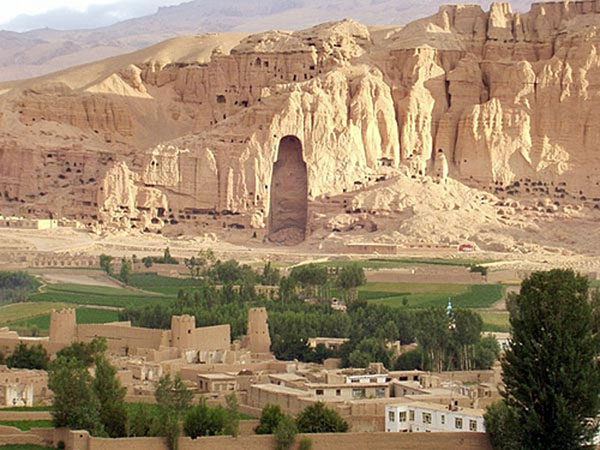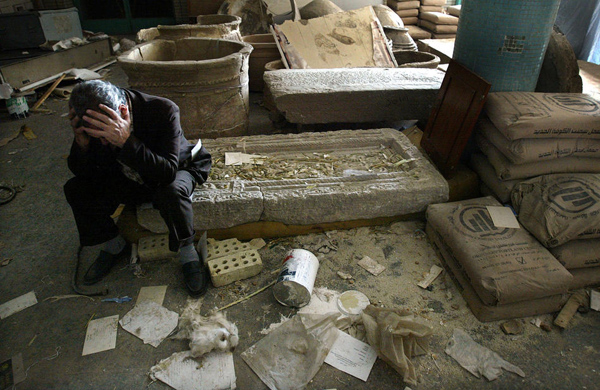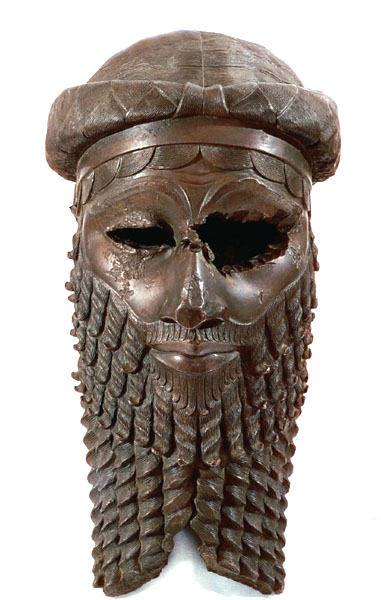
|
Lorna Mills and Sally McKay
Digital Media Tree this blog's archive OVVLvverk Lorna Mills: Artworks / Persona Volare / contact Sally McKay: GIFS / cv and contact |
View current page
...more recent posts
|
Speaking of iconoclasm, here's a very sad example.
And here is an interesting book review from The Guardian that provides some nuanced background to the story.
For some reason, my mind keeps pairing the lost Bamiyan Buddhas, with this statue of Marcus Aurelius (and his small-ish horse), which is not lots. The statue has survived by fluke. During the Medieval period, Christians destroyed a lot of classical Roman sculptures, and the bronze ones in particular were melted down for metal. This one survived because, as the story goes, the figure was at that time taken for Constantine, the emperor who had effectively legalized Christianity in 313 CE.
|
|
After seeing the current ROM exhibition Mesopotamia: Inventing Our World, showcasing famous artifacts from the British Museum (clay tablets with cuneiform - including Epic of Gilgamesh! - more on this later), I have been thinking more about the looting of the National Museum of Iraq during the American occupation.
Many of the obejcts from the early 19th century English and US excavations in Mesopotamia (present-day Iraq) were divided up between the British Museum, The Penn Museum in Philadelphia, and the government of Iraq (also Berlin and Chicago). One video in the ROM exhibition talked a little about the history of the archaeology from a Western perspective. This was projected next to a vitrine with an English, Victorian necklace made from Sumerian cylinder seals and a Victorian painting of an English woman wearing similar jewelery. That was a bit chilling. I'm glad they included it. (UPDATE: VB corrects me. It was a portrait of a woman wearing the exact necklace and she was married one of the archaeologists, who made it for her.) The exhibition at the ROM is billed as "extraordinary treasures of Sumer, Assyria and Babylon from the British Museum," but it does have objects from other museums as well including, of course, things from the ROM's collection, such as a Striding Lion from the palace of King Nebuchadnezzar. The show also has the magnificent Head of a Man from Nineveh, which belongs to the Iraq National Museum.
Head of a Man, c.2300-2200 BCE This is probably supposed to be Sargon of Akkad, a powerful ruler. The damage to the head was inflicted intentionally thousands of years ago, probably by somebody making a political statement. |
WARNING: this song is kind of MOR awful. Mute key recommended.
|
I think iconoclasm is interesting. It's been an issue for any monotheistic religion that wants to distinguish itself from paganism.
Crucifixion and Iconoclasts, Chludov Psalter, mid 9th century This image is a page from a Medieval book of Christian parables, made on vellum. There is an illustration from a scene of the crucifixion, when people tormented Jesus on the cross by dabbing vinegar into his wounds. Below is an image of a iconoclast destroying an image of Jesus by painting over it. This work refers back to a Christian campaign during Byzantine era banning the use of icons and ordering their destruction. The psalter makes a harsh statement about iconoclasts by comparing them to Jesus’ tormentors. |
Guest Post: Leiflet drawing

This is my drawing of Draw Me a Picture (2007) by Steven Yazzie, currently showing in the group exhibit Sakahan: International Indigenous Art at the National Gallery, Ottawa.
From the dashboard-mounted easel in his art car, the artist drew the Monument Valley as he careened through the winding hills. Among the brilliant works being shown at Sakahan, this piece jumped out for its immersive approach to re-figuring landscape and relationships with place. Sakahan is a must see show, on until September 2, 2013.
Credit Card Curation: Manuel Fernández



 Equestrian Statue of Marcus Aurelius, c.176 CE
Equestrian Statue of Marcus Aurelius, c.176 CE Iraq National Museum in Baghdad, after looting and destruction, 2003
Iraq National Museum in Baghdad, after looting and destruction, 2003 Iraq National Museum in Baghdad, after restoration, 2009
Iraq National Museum in Baghdad, after restoration, 2009